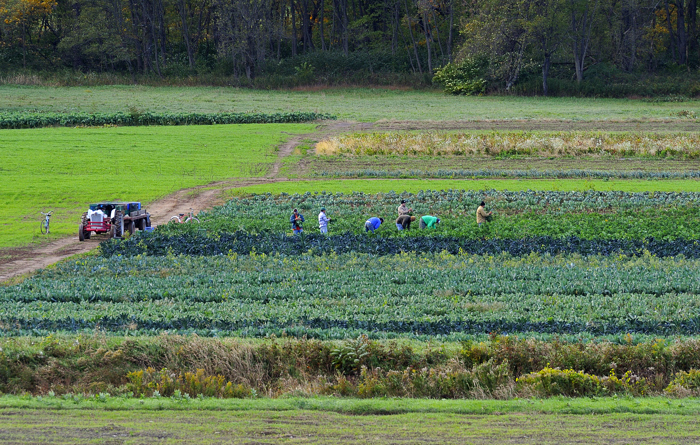Power Sharing and Participation, Part I
As industrial agriculture was taking hold in much of rural United States in the early 2000s, programs were implemented between local and city governments along with residents to find mutually-beneficial ways of protecting both the watershed and the communities within. An eighteen month process worthy of a saga between farming communities in the Catskills and New York City officials led to an agreement: farmers would be financially compensated for voluntary ecological improvements that prevented animal and chemical waste from entering the water system. Additionally, the city would bear the cost of replacing or fixing residents’ septic tanks when needed, and forestry management practices would be put in place to ensure regeneration of critical forest land.

From ‘Grey’ to ‘Green’ Infrastructure
Farmers have become “watershed guardians” keeping water clean while producing fresh produce for New York City. “By the 20th century, the sources were no longer so pristine. Upstream Catskill farmers began industrializing their farm operations. Nutrient use increased, dairy herds concentrated, erosion accelerated, and this led to pathogens showing up in New York City’s water supply… in the end an innovative and far-reaching agreement was crafted. With the city’s support, the Catskill farmers formed the Watershed Agricultural Council and created a program called ‘Whole Farm Planning.’ Rather than a one size fits all approach mandating specific practices, unique pollution control and forest management plans were developed for each participating farm, with technical support from experts of agencies such as the Department of Agriculture and Department of Forestry.”
To learn more about how farmers are working directly, please read the full article here.
Local Farming Impact
The Watershed Agricultural Council, is working directly with farmers to finance drainage solutions, manure pads, barnyard construction and other projects that farmers themselves might not be able to afford. Improvements like this are imperative to keeping the watersheds clean and properly maintained. There are currently 368 farms that have fully agreed to Whole Farm Management plans that account for a total of 163,500 acres of farmland.


